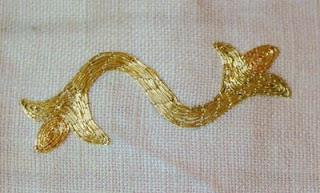Quite a little stack of links to interesting places and things has accumulated in my "slow blogging day" stash, but they are much too good to languish away. So here's a link drop - I hope there's something for you in there, too!
- Two blogs that recently came to my attention: Fait Attention and Publishing Archaeology.
- For those of you working with MS Word, there's a webpage with tons of good advice, instructions, makros and stuff at the Editorium. This site has helped me a lot when finishing off and layouting my thesis. I still wouldn't recommend to use pictures in large Word files, though. (My pics were layouted half-automatically, using the Word-generated picture list, a homemade makro and LaTex. Not the best layout ever, but very little work.)
- A new project is researching medieval soldiers "to challenge assumptions about the emergence of professional soldiery between 1369 and 1453", and they have put a database online where you can search almost 90 000 muster records for soldiers from 1369 to 1453. So don't forget The Soldier in Later Medieval Times when you are looking for muster information!
- I'm very happy that I usually don't have to cope with Latin (and I would look for help if I had to), but for those who are, there's Du Cange's medieval latin glossary available online: beware the rather large .pdf.
- And for those who read French, there's a bimonthly magazine called "Histoire et images Medievales", with some articles available for download. And of course with nice pictures!
- Two blogs that recently came to my attention: Fait Attention and Publishing Archaeology.
- For those of you working with MS Word, there's a webpage with tons of good advice, instructions, makros and stuff at the Editorium. This site has helped me a lot when finishing off and layouting my thesis. I still wouldn't recommend to use pictures in large Word files, though. (My pics were layouted half-automatically, using the Word-generated picture list, a homemade makro and LaTex. Not the best layout ever, but very little work.)
- A new project is researching medieval soldiers "to challenge assumptions about the emergence of professional soldiery between 1369 and 1453", and they have put a database online where you can search almost 90 000 muster records for soldiers from 1369 to 1453. So don't forget The Soldier in Later Medieval Times when you are looking for muster information!
- I'm very happy that I usually don't have to cope with Latin (and I would look for help if I had to), but for those who are, there's Du Cange's medieval latin glossary available online: beware the rather large .pdf.
- And for those who read French, there's a bimonthly magazine called "Histoire et images Medievales", with some articles available for download. And of course with nice pictures!





